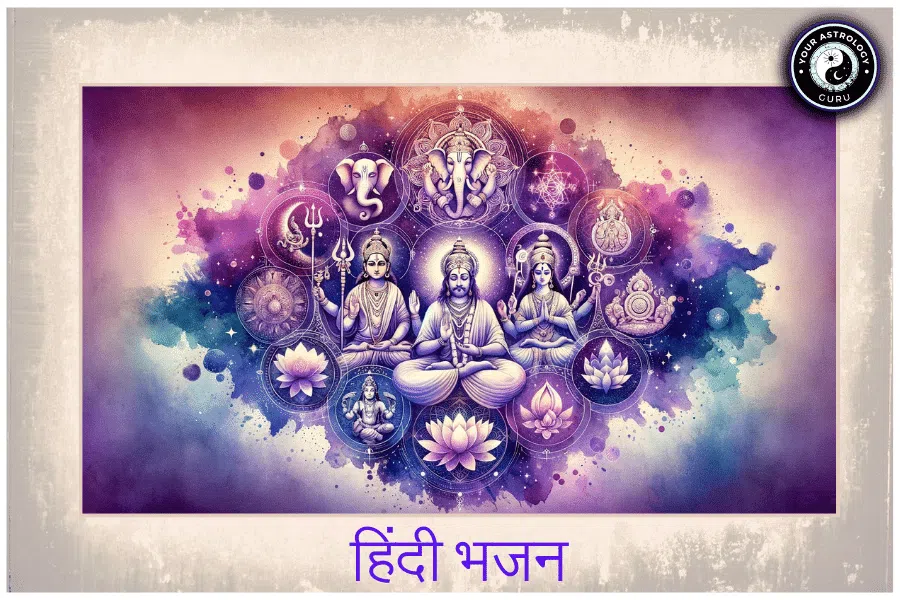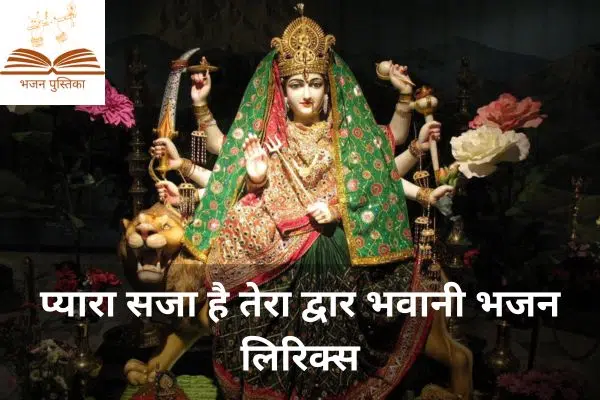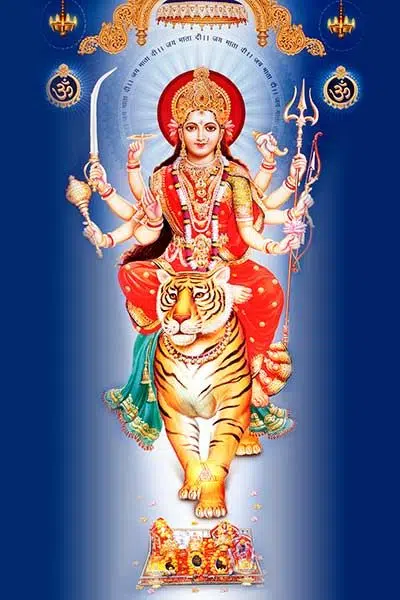The Matsya Puran is one of the eighteen Mahapuranas, a genre of ancient Hindu texts that are considered sacred and authoritative in Hindu mythology. These Puranas are believed to have been composed by the sage Vyasa and contain a wealth of knowledge about various aspects of Hinduism, including cosmology, mythology, genealogy, and philosophy. The Matsya Puran specifically focuses on the story of the Matsya Avatar, the first incarnation of Lord Vishnu, and contains numerous other tales and teachings that are considered essential in understanding Hindu mythology.
The Puranas hold great importance in Hindu mythology as they provide a comprehensive understanding of the various deities, their incarnations, and the moral and ethical teachings associated with them. They serve as a bridge between the ancient Vedic texts and the modern-day practices and beliefs of Hindus. The Puranas are not only revered for their religious significance but also for their historical and cultural value. They provide insights into ancient Indian society, customs, rituals, and traditions, making them an invaluable resource for scholars studying Hinduism.
Table of Contents
The Origin of Matsya Puran
According to Hindu mythology, the Matsya Puran originated from a mythical tale involving Lord Vishnu’s Matsya Avatar. The story goes that during the Satya Yuga (the first age of the world), a king named Satyavrata was performing his morning ablutions in a river when he found a small fish in his hands. The fish pleaded with the king to save it from larger fish that were trying to eat it. Out of compassion, King Satyavrata placed the fish in a jar of water.
Over time, the fish grew larger and larger until it could no longer fit in the jar. It then revealed itself to be Lord Vishnu in his Matsya Avatar. Lord Vishnu instructed King Satyavrata to build a massive boat and gather all kinds of seeds, animals, and sages to survive a great flood that was about to engulf the world. The king followed Lord Vishnu’s instructions and was able to save himself and all the living beings on the boat. During their time on the boat, Lord Vishnu imparted divine knowledge to King Satyavrata, which later became known as the Matsya Puran.
The Matsya Avatar holds great significance in Hindu mythology as it is considered the first incarnation of Lord Vishnu. It symbolizes the preservation of life and knowledge during times of destruction. The Matsya Avatar is often depicted as a fish with a horn on its head, representing its divine nature. This avatar is believed to have appeared at the end of each cycle of creation to save humanity and restore order in the universe.
The Role of Matsya Avatar in Hindu Mythology
The Matsya Avatar plays a crucial role in Hindu mythology as it sets the stage for the subsequent incarnations of Lord Vishnu. It is believed that Lord Vishnu takes on different forms to protect and preserve the world from evil forces and restore balance whenever it is disrupted. The Matsya Avatar serves as a precursor to these divine interventions.
The Matsya Avatar is associated with the concept of dharma, which refers to righteousness and moral duty. In Hindu mythology, dharma is considered essential for maintaining order and harmony in the world. The Matsya Avatar’s primary purpose was to rescue King Satyavrata and all living beings from the great flood, thereby upholding dharma by preserving life. This act of protection and preservation is a recurring theme in Hindu mythology, as subsequent avatars also undertake similar missions.
The Story of King Satyavrata and the Great Flood
The story of King Satyavrata and the Matsya Avatar is one of the most well-known tales in Hindu mythology. According to the Matsya Puran, King Satyavrata was a righteous and virtuous ruler who ruled over the kingdom of Dravida. One day, while performing his morning rituals in the river, he found a small fish in his hands. The fish pleaded with the king to save it from larger fish that were trying to eat it.
Out of compassion, King Satyavrata placed the fish in a jar of water. However, the fish grew rapidly and soon outgrew the jar. It then revealed itself to be Lord Vishnu in his Matsya Avatar. Lord Vishnu instructed King Satyavrata to build a massive boat and gather all kinds of seeds, animals, and sages to survive a great flood that was about to engulf the world.
King Satyavrata followed Lord Vishnu’s instructions and built a massive boat called the “Navavidha Bhakti” or “Ninefold Devotion.” He gathered all kinds of seeds, animals, and sages and embarked on the boat just as the floodwaters began to rise. During their time on the boat, Lord Vishnu imparted divine knowledge to King Satyavrata, which later became known as the Matsya Puran.
The story of King Satyavrata and the great flood holds great significance in Hindu mythology as it symbolizes the cyclical nature of creation and destruction. It also emphasizes the importance of righteousness and devotion in times of crisis. King Satyavrata’s unwavering faith in Lord Vishnu and his willingness to follow his instructions saved him and all living beings from certain destruction.
The Legend of the Kurma Avatar: The Tortoise Incarnation
The Kurma Avatar is another significant incarnation of Lord Vishnu that is mentioned in the Matsya Puran. According to Hindu mythology, during the churning of the ocean (Samudra Manthan) by the Devas (celestial beings) and Asuras (demons), a celestial turtle named Kurma offered its back as a support for the churning rod (Mount Mandara).
The story goes that the Devas and Asuras were trying to obtain the nectar of immortality (Amrita) from the ocean to gain ultimate power. However, they needed a stable base to churn the ocean, and Lord Vishnu took on the form of a giant turtle to provide this support. The Kurma Avatar symbolizes stability, patience, and perseverance in the face of adversity.
The Kurma Avatar played a crucial role in the churning of the ocean, as it provided the necessary foundation for the Devas and Asuras to churn the ocean and obtain various divine treasures. These treasures included celestial beings like Lakshmi (goddess of wealth), Kamadhenu (the wish-fulfilling cow), and Dhanvantari (the physician of the gods), as well as deadly poisons like Halahala.
The Kurma Avatar is often depicted as a giant turtle with Lord Vishnu sitting on its back. This incarnation represents Lord Vishnu’s ability to take on any form to fulfill his divine duties. The story of the Kurma Avatar teaches important lessons about teamwork, perseverance, and sacrifice, as it was only through the combined efforts of the Devas and Asuras that they were able to obtain the treasures from the ocean.
The Battle of Devas and Asuras: The Churning of the Ocean
The churning of the ocean (Samudra Manthan) is one of the most famous stories in Hindu mythology and is mentioned in various Puranas, including the Matsya Puran. According to the legend, once upon a time, the Devas and Asuras decided to churn the ocean to obtain various divine treasures, including the nectar of immortality (Amrita).
To accomplish this task, they used Mount Mandara as a churning rod and the serpent Vasuki as the rope. The Devas held the tail of the serpent, while the Asuras held its head, and they began to churn the ocean. However, as they churned, various celestial beings and deadly creatures emerged from the ocean.
The churning of the ocean represents the eternal struggle between good and evil, light and darkness. It symbolizes the constant battle between the forces of order (Devas) and chaos (Asuras) in the universe. The story teaches important lessons about perseverance, cooperation, and the consequences of greed.
During the churning of the ocean, various divine treasures emerged, including celestial beings like Lakshmi (goddess of wealth), Kamadhenu (the wish-fulfilling cow), and Dhanvantari (the physician of the gods). However, it also released deadly poisons like Halahala, which threatened to destroy all life in the universe.
To save the world from destruction, Lord Vishnu took on his Mohini Avatar and appeared before the Devas and Asuras. Mohini, a beautiful enchantress, convinced them to give her the poison. She then drank it herself to protect the world from its destructive power. This act of self-sacrifice by Lord Vishnu demonstrates his willingness to do whatever it takes to maintain balance and protect creation.
The Tale of Lord Vishnu and the Sage Bhrigu
The Matsya Puran also contains a tale involving Lord Vishnu and the sage Bhrigu. According to Hindu mythology, Sage Bhrigu was one of the seven great sages (Saptarishis) who played a significant role in shaping ancient Indian civilization. He was known for his deep knowledge and wisdom.
One day, Sage Bhrigu decided to test the patience and hospitality of various deities by visiting them unannounced. He first went to Lord Brahma but found him too preoccupied with his creative activities to pay attention to him. Next, he went to Lord Shiva but found him in deep meditation and did not disturb him. Finally, he went to Lord Vishnu’s abode, Vaikuntha.
When Sage Bhrigu arrived at Vaikuntha, he found Lord Vishnu resting on the serpent Adishesha. Out of anger and frustration, the sage kicked Lord Vishnu on his chest. Instead of getting angry or retaliating, Lord Vishnu calmly apologized to the sage for any discomfort caused by his actions and asked him to forgive him.
The story of Sage Bhrigu and Lord Vishnu teaches important lessons about humility, forgiveness, and the power of patience. It emphasizes the importance of treating others with respect and understanding, even in challenging situations. Lord Vishnu’s response to Sage Bhrigu’s actions demonstrates his divine qualities of compassion and forgiveness.
The Story of Dhruva: A Devotee of Lord Vishnu
The Matsya Puran also contains the story of Dhruva, a young prince who became a great devotee of Lord Vishnu. According to Hindu mythology, Dhruva was the son of King Uttanapada and his second wife Suniti. However, Dhruva’s stepmother Suruchi was jealous of him and constantly belittled him.
One day, Dhruva saw his stepbrother Uttama sitting on his father’s lap, which made him feel neglected and rejected. He approached his father for affection but was scolded by Suruchi and told that only those who sit on their father’s lap can receive love and attention. Determined to earn his father’s love and respect, Dhruva decided to seek the blessings of Lord Vishnu.
Dhruva went to the forest and began meditating on Lord Vishnu with great devotion and determination. Impressed by his unwavering devotion, Lord Vishnu appeared before Dhruva and granted him a boon. Dhruva asked for a place in the heavens where he could shine as a bright star for eternity. Lord Vishnu granted his wish and blessed him with the eternal position of the Pole Star (Dhruva Nakshatra).
The story of Dhruva teaches important lessons about perseverance, devotion, and the power of faith. Dhruva’s unwavering determination to seek the blessings of Lord Vishnu despite facing numerous challenges and obstacles is an inspiration for devotees. It emphasizes the importance of having a strong connection with the divine and the rewards that come with sincere devotion.
The Mythical Tale of Prahlada and Hiranyakashipu
The Matsya Puran also contains the mythical tale of Prahlada and Hiranyakashipu, which is one of the most famous stories in Hindu mythology. According to the legend, Hiranyakashipu was a powerful demon king who had obtained a boon from Lord Brahma, which made him virtually invincible.
Hiranyakashipu became arrogant and believed himself to be superior to the gods. He demanded that everyone worship him as the supreme deity and forbade the worship of any other gods. However, his own son, Prahlada, was a devoted follower of Lord Vishnu and refused to worship his father.
Despite Hiranyakashipu’s attempts to kill Prahlada, he remained steadfast in his devotion to Lord Vishnu. Prahlada believed that true power and happiness could only be found in surrendering to the divine. His unwavering faith in Lord Vishnu eventually led to the downfall of Hiranyakashipu.
The story of Prahlada and Hiranyakashipu teaches important lessons about the power of faith, righteousness, and the consequences of arrogance. It emphasizes that true power lies in humility and devotion to a higher power. Prahlada’s unwavering faith in Lord Vishnu and his refusal to bow down to his father’s tyranny is an inspiration for devotees.
The Journey of King Bali and Lord Vishnu’s Vamana Avatar
The Matsya Puran also contains the story of King Bali and Lord Vishnu’s Vamana Avatar. According to Hindu mythology, King Bali was a powerful demon king who had conquered the three worlds (heaven, earth, and the netherworld) and had become a threat to the Devas.
To protect the Devas and restore balance in the universe, Lord Vishnu took on the form of a dwarf Brahmin named Vamana. He approached King Bali and asked for a small piece of land that he could cover with three steps. King Bali, known for his generosity, agreed to the request without realizing that Vamana was none other than Lord Vishnu.
As soon as King Bali granted his request, Vamana grew into a giant form and covered the entire universe with his first two steps. With no place left for the third step, King Bali offered his own head for Vamana to place his foot. Impressed by King Bali’s selflessness and devotion, Lord Vishnu granted him a boon that he would become the ruler of the netherworld (Patala) and would be revered as a great king.
The story of King Bali and Lord Vishnu’s Vamana Avatar teaches important lessons about humility, sacrifice, and the balance of power. In this ancient Hindu myth, King Bali was a powerful and generous ruler who had gained control over the three worlds. However, his pride and arrogance led him to challenge the gods, including Lord Vishnu. To teach Bali a lesson, Lord Vishnu took the form of Vamana, a dwarf Brahmin boy, and approached the king for a favor. Despite his advisors’ warnings, Bali agreed to grant Vamana’s request. As Vamana grew in size, he covered the entire universe with just two steps. With his third step, he pushed Bali into the netherworld, humbling the once mighty king. This story emphasizes the importance of humility and the consequences of unchecked pride. It also highlights the idea that power should be used responsibly and with consideration for others.














